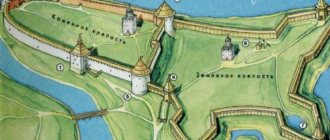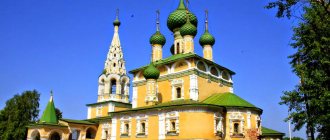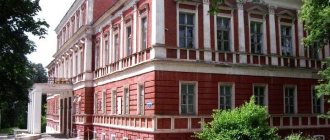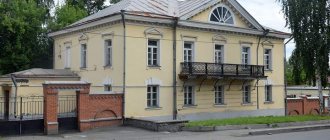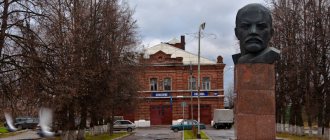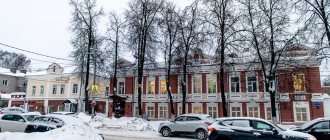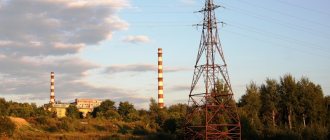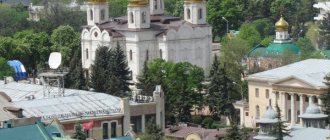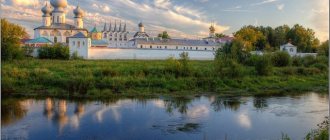Pustoshka - Reserved Russia
The city of Pustoshka is the administrative center of the urban settlement "Pustoshka" and the Pustoshkinsky district of the Pskov region. The city is located on the Velikoretskaya Plain, on the Krupeya River, 191 km south of Pskov. Railway station on the Moscow - Riga line.
The city's population in 2010 was 4,619 people.
The settlement of Pustoshka arose as a hole in Zavolochye (or Pustoy Rzhev), perhaps immediately after Zavolochye became the center of Pustorzhevsky district, i.e. somewhere in the middle of the 16th century. Recently, the fortress city of Zavolochye celebrated a milestone anniversary - 470 years since its founding, it is quite possible that the Yamsk station Pustoshka arose at the same time.
Even at the beginning of the 18th century, the St. Petersburg – Kyiv highway, straight as a string, ran here, along which a stagecoach ran.
One mile from the intersection with the railway, on the Aloli side, even then there was a station for post horses for traveling on stage horses. The name of that station has not been preserved, but with the emergence of the railway station, the former settlement near the highway began to be called Old Pustoshka.
Pustoshka is the youngest city in the Pskov region. Its foundation dates back to the beginning of the 20th century. It arose as a settlement at the Pustoshka station, opened in 1901.
Its name, of course, comes from the word “wasteland,” which was what this place used to be. As soon as the locomotives began to run along the line, the first residents began to appear near the station. These were traders who bought flax, leather, and livestock from the surrounding villages, and set up their warehouses near the station. The houses were built by artisans - a blacksmith, a tinsmith, a cooper. Other poor people also began to settle - masons, peasants who became loaders, and cab drivers. A shop and a drinking establishment immediately appeared.
At the end of 1925, Pustoshka received city status. Its location at the intersection of the most important communications in the north-west played a decisive role in deciding the issue of urban status.
Since 1927 - the center of the Velikoluksky district of the Leningrad region.
The largest enterprise in the young city was a workshop (30 workers) producing plows. There was a tar factory, handicraft enterprises for tanning leather, producing sausages, three forges and several household workshops. The population of Pustoshka by that time exceeded 1000 people. The first successes in the economy were noted. Fishing cooperatives received good income, and consumer cooperation strengthened its position.
During the Great Patriotic War, the city was occupied by the Germans from July 16, 1941. Due to its important strategic location (near two highways and a station), it attracted the attention of Soviet partisans, who successfully derailed enemy trains. Pustoshka was liberated on February 27, 1944 by troops of the 2nd Baltic Front during the Starorussko-Novorzhevsk operation.
The largest transport highways intersect in Pustoshka: M9 “Baltic” and M20 St. Petersburg - Pskov - border with Belarus. It is located at an equal distance from the nearest large cities in the region: Velikiye Luki, Sebezh, Opochka, Nevel.
Some of the city's attractions include:
Pustoshkinsky Museum of History and Local Lore, Pustoshka. Created on the basis of the museum of the Pustoshkinskaya secondary school and the city museum of Military Glory, it was opened in February 1996 in a renovated building with four halls.
The Pustoshkinskaya Church of St. Sergius of Radonezh was founded in 1997.
15 km northwest of Pustoshka, on Lake Zverino, there is the Alol camp site, which has become famous as a center of Russian orienteering.
Telephone code: +7 81142
Official website of the city: www.pustoshka.ru
www.zapoved.net
Territorial department of the Pustoshkinsky district of the Committee for Social Protection of the Pskov region
Address
182300, Pskov region, Pustoshkinsky district, Pustoshka, st. Pervomaiskaya, 21
Phone numbers
- 8-800-301-89-14 - registration/extension of child benefits, benefits, subsidies, veterans' payments, EDV, EDC for housing and communal services
and other legal issues related to social protection of the population. We do not provide reference information about the opening hours of a specific social security department, the telephone number of a specific specialist, and we do not process complaints and suggestions!
- +7 (81142) 2-14-81 - head of the territorial department of social protection of the population Alekseev Sergey Petrovich
- +7 (81142) 2-26-08
- +7 (81142) 2-12-53
Schedule
- Monday: 09:00 - 18:00, break 13:00 - 14:00;
- Tuesday: 09:00 - 18:00, break 13:00 - 14:00;
- Wednesday: 09:00 - 18:00, break 13:00 - 14:00;
- Thursday: 09:00 - 18:00, break 13:00 - 14:00;
- Friday: 09:00 - 18:00, break 13:00 - 14:00;
- Saturday: closed;
- Sunday is a day off.
Official site
- social.pskov.ru
Accessibility by public transport
Stop: Bath, distance : 370 m.
On the map (Pervomaiskaya St., 21)
The main attractions of Pustoshka
Every person, going on a trip, makes a list of the attractions of Pustoshka, which must be visited. Some plan independent ways to get to know the city, while others prefer different sightseeing tours. As a rule, they capture the main attractions of Pustoshka and introduce tourists to the main milestones of the history and cultural life of the city.
Art lovers first of all note the sculptural attractions on the map of Pustoshka. In large city squares you can most often see traditional monuments with which all tourists take photographs. But in the famous garden ensembles you can see exhibitions of conceptual sculptures and installations. They can be made from the most unpredictable materials and have amazing shapes that you will need to think about more.
Among the main attractions of Pustoshka, religious sites play a special role. They are the center of the architectural ensemble of the Russian city, many of them have an interesting and mysterious history. In Pustoshka and beyond, you can visit famous monastery complexes, admire the beauty of large Orthodox cathedrals, or wander into cozy and miniature chapels, which are so popular among city residents.
Traveling around the area, you can still come across unconventional religious attractions. These can be national religious sites, centuries-old religious associations, or even mystical ritual places.
A great idea is pedestrian promenades along Pustoshka. You can get a map of Pustoshka with sights and routes in advance, or simply go in any direction. This makes it even more interesting. Let yourself get lost in the colorful streets or spend time in the public gardens. And if you get tired, you can have a snack or order a cup of coffee in some nice restaurant. By the way, in Pustoshka there are a couple of religious establishments that any guest of the city would like to visit.
If you want to get the most complete picture of the city and its history, come on a tour of the Pustoshka museum complexes. They contain extensive collections on ethnology, art, objects of folk art and everyday life, from archaeological expeditions. Usually such attractions are located in the center.
At the same time, thematic museums located in open space can often be seen in suburban areas. They present entertaining showrooms dedicated to national life and folk crafts. These can also be installations of ancient cities or military forts. These Wasteland attractions will be interesting for children.
For family tourists, the main question is always on the agenda: where to go with children. The most popular option is to go to one of the Pustoshka water parks. Most often, there are discounted rates when purchasing a family pass for the whole day.
If you are going on vacation in winter or spring, we recommend choosing Pustoshki ski centers for active leisure. This place has a wide variety of entertainment for children and parents: various slopes for skiing, snowboarding, cheesecake skiing, and exciting snowparks for experts. As a rule, these complexes can be found not very far from the city. So it’s more convenient to get there by personal vehicle or rent a car.
An excellent prospect for family vacations is an outing into nature. Such attractions are located near Pustoshka. These can be rivers, gorges, famous protected areas. You just need to decide on a place. You can get to these corners of nature either on your own or using the services of public carriers. Look in advance at the schedule of regular buses starting from suburban bus stations in the direction you need. In such an adventure you will get a lot of vivid impressions from communicating with nature, and you will put your mind and body in order.
If you are visiting the city on business matters, then you have little time for full excursions. In such circumstances, we recommend purchasing a short guide to the sights of Pustoshka with photos and descriptions.
You can certainly find such a guide upon arrival in the city at the railway stations or at the airport. This guide contains an index of the best places to go in Pustoshka, with names and photos of attractions. Agree, this greatly simplifies the task of what to see in the Wasteland, especially if you have little time.
But, if the guidebook describes the most popular corners of Pustoshka, then in the search network you can find ratings of little-known, but no less interesting attractions with reviews of tourists who visited them. Inactive adits, mysterious quarries, unique railway tracks, overpasses - such attractions attract adventure lovers.
When planning a trip to Pustoshka, it is worth finding out not only about the attractions, but also about other significant infrastructure facilities of the city. To easily move around the city, it is important to imagine the scheme of public transport, the localization of the main railway and bus terminals or river stations, metro stations. At the same time, such important transport hubs of Pustoshka can become objects of tourist interest. Often they are the ones that evoke in tourists the first associations and emotions associated with the city.
Show more
akuaku.ru
Parent organization: Committee for Social Protection of the Pskov Region
Address
180000, Pskov region, Pskov, st. Nekrasova, 23
Phone numbers
- 8-800-301-89-14 - registration/extension of child benefits, benefits, subsidies, veterans' payments, EDV, EDC for housing and communal services
and other legal issues related to social protection of the population. We do not provide reference information about the opening hours of a specific social security department, the telephone number of a specific specialist, and we do not process complaints and suggestions!
- +7 Chairman of the Social Protection Committee Evstigneeva Olga Mikhailovna, room 243A
- +7 (ext. 102) - first deputy chairman Tatyana Valerievna Seliverstova, office 243B
- +7 (ext. 104) - Deputy Chairman Tatyana Vladislavovna Nikolaeva, office 240
- +7 (ext. 103) - Deputy Chairman Elena Aleksandrovna Fedorova, office 244
Department of Social Payments, Benefits and Subsidies
- +7 (ext. 126) - head of department Lyubov Grigorievna Akhmetova, office 141
- +7 (ext. 125) - deputy head of department Irina Anatolyevna Levina, office 140
- +7 (ext. 123) - deputy head of department Ivanova Irina Vladimirovna, office 140
- +7 (ext. 121, 122, 124, 120) — consultants, offices: 140, 140A
Department for providing living quarters for orphans and persons from among them
- +7 (ext. 174) - head of department Popova Irina Anatolyevna, office 250
- +7 (ext. 172) - deputy head of department Olga Yuryevna Pushkareva, office 242
- +7 (ext. 169) - consultant Polina Aleksandrovna Kozlova, room 242
Department of Veterans, Disability and Social Services at Home
- +7 (ext. 109) - head of department Mozgacheva Irina Vyacheslavovna, office 172
- +7 (ext. 133) - deputy head of department Maria Ivanovna Krasnoslabodtseva, office 170
- +7 (ext. 159) - deputy head of department Mikhailovskaya Ekaterina Sergeevna, office 170
- +7 (ext. 139, 161, 134, 176) — consultants, room 170
Department of Inpatient Social Services for Citizens
- +7 (ext. 106) - head of department Igor Vyacheslavovich Vostorgov, office 169
- +7 (ext. 131) - deputy head of department Tatyana Yuryevna Romanova, office 103
- +7 (ext. 146) - deputy head of department Lyudmila Mikhailovna Kalinina, office 169
- +7 (ext. 156, 178) — consultants, room 103
- +7 (ext. 110) — consultants, room 103
Department of organizational, legal and documentation support
- +7 (ext. 107) - head of department Ivanova Irina Nikolaevna, office 246
- +7 (ext. 177) - Deputy Head of Department Natalya Borisovna Chertorogova, office 241
- +7 (ext. 149) - Deputy Head of Department Alexey Nikolaevich Mikryukov, office 241
- +7 (ext. 152, 119, 100, 113, 119, 112) - consultants, offices: 166, 243, 109, 99
Department of guardianship and trusteeship
- +7 (ext. 171) - head of department Valentina Vladimirovna Chernova, office 101
- +7 (ext. 151) - Deputy Head of Department Natalya Borisovna Polenova, office 101
- +7 (ext. 162), 29-99-97 (ext. 127, 115) - consultants, offices: 101, 105, 110
Department of Family, Women, Children and Demography
- +7 (ext. 135) - head of department Marina Vladimirovna Kirillova, office 106
- +7 (ext. 163) - deputy head of department Vita Borisovna Egorova, office 174
- +7 (ext. 136, 157, 158) — consultants, room 174
Planning and financial department
- +7 (ext. 111) - head of department Ekaterina Ionovna Rusakova, office 237
- +7 (ext. 164) - Deputy Head of Department Galina Viktorovna Vakhmistorova, office 236
- +7 (ext. 166) - Deputy Head of Department Yulia Alekseevna Vantseva, office 236
- +7 (ext. 150, 175) — consultants, offices: 236, 238
Accounting and Reporting Department
- +7 (ext. 117) - head of department Voloskova Marina Nikolaevna, office 252
- +7 (ext. 167) - deputy head of department Vera Georgievna Sidorova, office 239
- +7 (ext. 160) - Deputy Head of Department Natalya Viktorovna Gromyko, office 248
- +7 (ext. 116) - deputy head of department Natalya Nikolaevna Selivanova, office 239
- +7 (ext. 143, 141, 168, 118, 137) — consultants, offices: 238, 239, 248
Schedule
- Monday: 09:00 - 18:00, break 13:00 - 14:00;
- Tuesday: 09:00 - 18:00, break 13:00 - 14:00;
- Wednesday: 09:00 - 18:00, break 13:00 - 14:00;
- Thursday: 09:00 - 18:00, break 13:00 - 14:00;
- Friday: 09:00 - 18:00, break 13:00 - 14:00;
- Saturday: closed;
- Sunday is a day off.
Official site
- social.pskov.ru
Accessibility by public transport
Stop: Children's Park, distance : 240 m.
On the map (Nekrasova St., 23)
Panorama Pustoshka. Virtual tour Pustoshka. Attractions, map, photos, videos.
Pustoshka is a city (since 1925) in Russia, the administrative center of the Pustoshkinsky district of the Pskov region.
It makes up the municipal formation “Pustoshka” (with the status of “urban settlement” - within the boundaries of the city). Population - 4083 (2017). The city is located on the Krupeya River, on the Velikoretskaya Plain. It is located at the intersection of the federal highways M9 "Baltic" and M20 St. Petersburg - Pskov - the border with Belarus. Near the city there is a railway station of the same name on the Moscow-Riga line, 191 km southeast of Pskov. History of Pustoshka Village
It arose as a village at the Pustoshka station of the Moscow-Vindavo railway (opened on September 9, 1900). For the construction of the station, a wasteland plot of land was purchased from the peasants of the village of Zvyagi, hence the name - Pustoshka. Local historians claim, however, that this name previously referred to a rural settlement that existed nearby, which arose as the pit of Empty Rzheva), probably in the middle of the 16th century. The first residents in the station village appeared as soon as steam locomotives began running along the railway line. Traders settled here (who bought flax, leather, and livestock from the surrounding villages), artisans (blacksmith, tinsmith, cooper), masons, cab drivers and former peasants who became loaders. A shop and a drinking establishment immediately appeared. Before the October Revolution, the village of Pustoshka was part of the Soinskaya volost of the Sebezh district of the Vitebsk province. In 1920, Pustoshkinskaya volost was created from Soinskaya and Berezyanskaya volosts, and the village of Pustoshka became its center. On February 15, 1923, the volost was enlarged (part of the Alol volost was transferred to it). On March 24, 1924, the Vitebsk province was abolished, and Pustoshka, together with the entire Sebezh district, was transferred to the Pskov province. The city of Pustoshka By decree of the All-Russian Central Executive Committee of June 6, 1925, the village of Pustoshka received the status of a city. In accordance with the Resolution of the Presidium of the All-Russian Central Executive Committee of August 1, 1927, which abolished the division into provinces and districts as part of the administrative-territorial reform carried out in the USSR, the city of Pustoshka became part of the Velikoluksky district of the Leningrad region, becoming the administrative center of the newly formed Pustoshkinsky district. At this time, the number of inhabitants in the city exceeded 1000 people; The largest enterprise in the city (30 workers) was a workshop for the manufacture of plows, there was a tar factory, three forges, handicraft enterprises for tanning leather and producing sausages, and several household workshops. By resolutions of the Presidium of the All-Russian Central Executive Committee of June 3 and 17, 1929, Pustoshka and the Pustoshkinsky district, together with the entire Velikoluksky district, were transferred to the Western Region (center - Smolensk). By a resolution of the All-Russian Central Executive Committee and the Council of People's Commissars of the USSR dated July 23, 1930, the Velikoluksky District was abolished. By a resolution of the Presidium of the All-Russian Central Executive Committee of January 29, 1935, the entire territory of the former Velikoluksky District, including Pustoshka and Pustoshkinsky District, was transferred to the newly formed Kalinin Region (center - Kalinin), and on February 5, 1935, Velikoluksky District was ... ... (Russian) www.streetvi.ru
Links[edit]
Orthodox Church in Pustoshka
Notes[edit]
- ^ abcd Law No. 833-oz states that the boundaries of administrative districts are identical to the boundaries of municipal districts. In Law No. 420-oz, which defines the boundaries and composition of municipal districts, the city of Pustoshka is included in the Pustoshkinsky district.
- ^ abc Encyclopedia of Russian Cities
. Moscow: Great Russian Encyclopedia. 2003. p. 368. ISBN 5-7107-7399-9. - ^ a b Federal State Statistics Service (2011). “All-Russian Population Census 2010. Volume 1" [All-Russian Population Census 2010, vol. 1]. All-Russian Population Census 2010 [All-Russian Population Census 2010]
. Federal State Statistics Service. - "26. The size of the permanent population of the Russian Federation by municipalities as of January 1, 2022". Federal State Statistics Service. Retrieved January 23, 2022.
- ^ ab State Committee of the Russian Federation on Statistics. Committee of the Russian Federation for Standardization, Metrology and Certification. No. OK 019-95 January 1, 1997 “All-Russian classifier of objects of administrative-territorial division. Code 58 250", ed. changes No. 278 / 2015 dated January 1, 2016. (Goskomstat of the Russian Federation. Committee of the Russian Federation for Standardization, Metrology and Certification. No. OK 019-95 January 1, 1997. Russian classification of administrative divisions) (OKATO).
Code 58 250 , as amended by Amendment No. 278/2015 of 01/01/2016). - ^ abcd Law No. 420-oz.
- Federal State Statistics Service. Federal Agency for Technological Regulation and Metrology. No. OK 033-2013 January 1, 2014 “All-Russian classifier of municipal territories. Code 58 650". (Federal State Statistics Service. Federal Agency for Technological Regulation and Metrology. No. OK 033-2013 January 1, 2014. Russian classification of municipal territories. Code 58 650.
). - "On the Calculation of Time". Official Internet portal of legal information
. June 3, 2011. Retrieved January 19, 2022. - Post office. Information and computing center of OASU RPO. ( Post office
).
Search for postal service objects ( postal Search for objects
) (in Russian) - ↑
Federal State Statistics Service of Russia (May 21, 2004).
“The population of Russia, the constituent entities of the Russian Federation as part of federal districts, urban settlements, settlements, settlements is 3 thousand or more people” [Population of Russia, its federal districts, federal districts, districts Urban settlements, rural settlements - administrative centers and rural settlements with a population of over 3,000] (XLS). All-Russian Population Census 2002
. - “All-Union Population Census of 1989. The current population of union and autonomous republics, autonomous regions and districts, territories, negative phenomena, urban settlements and rural district centers” [All-Union Population Census of 1989: current population of union and autonomous republics, Autonomous regions and districts , territories, regions, districts, urban settlements and villages performing the functions of district administrative centers. All-Union Population Census of 1989 [All-Union Population Census of 1989]
.
Institute of Demography of the National Research University: Higher School of Economics [Institute of Demography of the National Research University: Higher School of Economics]. 1989 - via Demoscope Weekly
. - ^ abcdefgh Administrative-territorial structure of the Pskov region
, pp. 11–16. - ^ ab “Archival copy” Pustoshkinsky district (August 1927 - June 1929) (in Russian). Directory of the history of the administrative-territorial division of the Leningrad region. Archived from the original on October 29, 2013. Retrieved June 27, 2014.CS1 maint: archived copy as title (link)
- Economics (in Russian). Portal of municipalities of the Pskov region. Retrieved August 27, 2012.
- Monuments of history and culture of the peoples of the Russian Federation (in Russian). Ministry of Culture of Russia. Retrieved June 2, 2016.
- Pustoshkinsky Museum of History and Local Lore (in Russian). Administration of the Pskov region. Retrieved August 24, 2012.
Wasteland, Attractions, Population, Economy
Attractions
In the area of the city there are archaeological sites of the Neolithic era, as well as the remains of fortifications and burial mounds of the 1st millennium BC. e. - 1st millennium AD e.
The Pustoshkinskaya Church of St. Sergius of Radonezh was founded in 1997. Until this moment, there were no temple buildings in the settlement. The church was consecrated in 2000, and in 2009 it received its own bells.
15 km northwest of Pustoshka, on Lake Zverino, there is the Alol camp site, which has become famous as a center of Russian orienteering.
Photos
| A spontaneous market in the center of Pustoshka | District Court in Pustoshka | Department store in Pustoshka |
Population
According to the 1989 census, the city's population was 6,300 people, according to the 2002 census - 5,509 people, according to an estimate at the beginning of 2009 - 4,873 residents.
Economy
Forestry, industrial plant (woodworking), dairy plant, bakery. Oil depot.
Story
It arose as a village at the Pustoshka station of the Moscow-Vindava Railway (opened in 1901). For the construction of the station, a wasteland plot of land was purchased from the peasants of the village of Zvyagi, hence the name - Pustoshka. Since 1920, Pustoshka is the center of the volost, since 1924 - as part of the Pskov province, since 1925 - a city, since 1927 - the center of the Velikoluksky district of the Leningrad region, then the Western region with its center in Smolensk, since 1935 - Kalininskaya with its center in Kalinin. Pustoshka is the youngest city in the Pskov region.
Church of St. Sergius of Radonezh
During the Great Patriotic War, the city was occupied by the Germans from July 16, 1941. Due to its important strategic location (near two highways and a station), it attracted the attention of Soviet partisans, who successfully derailed enemy trains. In particular, on November 1, 1943, the switchman at the Pustoshka railway station, AC Portnov, gave one German train a stop sign, and signaled to the second echelon that the track was clear, and it crashed into a standing train at full speed. As a result, the railway was put out of action for more than a day. Pustoshka was liberated on February 27, 1944 by troops of the 2nd Baltic Front during the Starorussko-Novorzhevsk operation.
www.travellers.ru
Get to know your native land: The Foundation of Pustoshka
Empty
Pustoshka is the youngest city in the Pskov region, located in the south of the Pskov region. Its foundation dates back to the beginning of the 20th century. The village arose at the Pustoshka railway station in 1901. As soon as the locomotives began to run along the line, the first residents began to appear near the station. These were traders who bought flax, leather, and livestock from the surrounding villages, and set up their warehouses near the station. The houses were built by artisans - a blacksmith, a tinsmith, a cooper. Other poor people also began to settle - masons, peasants who became loaders, and cab drivers. A shop and a drinking establishment immediately appeared.
At the end of 1925, Pustoshka received city status. Its location at the intersection of the most important communications in the north-west played a decisive role in deciding the issue of urban status.
| Empty. Railroad station |
During the Great Patriotic War, the city was occupied by the Germans from July 16, 1941.
Due to its important strategic location (near two highways and a station), it attracted the attention of Soviet partisans, who successfully derailed enemy trains. Pustoshka was liberated on February 27, 1944 by troops of the 2nd Baltic Front during the Starorussko-Novorzhevsk operation. The name of the city apparently comes from the words “wasteland from wasteland, land” (according to Dahl’s dictionary). In the 19th century, there were about two dozen villages with this name in the Pskov province.
Modern city
Attractions:
The Pustoshkinskaya Church of St. Sergius of Radonezh was founded in 1997. Until this moment, there were no temple buildings in the settlement. The church was consecrated in 2000, and in 2009 it received its own bells.
On November 4, 2014, the Alley of Heroes of Military Glory was inaugurated. The opening of the architectural complex dedicated to the memory of those killed in the Great Patriotic War was timed to coincide with the celebration of National Unity Day. Representatives of district authorities, veterans, members of the public, and schoolchildren took part in it.
The alley is located in the city park near the obelisk in honor of the liberation of the city within the framework of the People's Program by the efforts of the municipal authorities with the involvement of funds from entrepreneurs, residents and guests of the city.
Relatives of the heroes whose names are immortalized on the Alley were invited to the opening of the Alley: the son and daughter of the Hero of the Soviet Union Nikolai Korolev, the daughters and grandchildren of the holder of the Order of Glory of three degrees Alexei Gaveev, as well as the niece of the Hero of the Soviet Union Feoktista Budanov.
The honor of laying the garland of Glory at the foot of the obelisk was presented to the soldiers of the Pskov 76th Guards Air Assault Division. In the silence, salvos rang out in honor of the Wasteland Heroes. Then the ritual of laying flowers at the memorial steles with portraits of the Heroes took place.
Let us add that eleven Heroes of the Soviet Union and four holders of the Order of Glory of three degrees were born in the Pustoshkinsky district. Similar memorial complexes have already appeared in Ostrov, Pushkinskiye Gory, and Velikiye Luki.
More details:
Video about Pustoshka
www.pskovkid.ru
Empty Wikipedia
Pustoshka is a city (since 1925[2]) in Russia, the administrative center of the Pustoshkinsky district of the Pskov region. It makes up the municipal formation “Pustoshka” (with the status of “urban settlement” - within the boundaries of the city)[3].
Population - 4017[1] (2018)[⇨].
The city is located on the Krupeya River, on the Velikoretskaya Plain. It is located at the intersection of the federal highways M9 "Baltic" and M20 St. Petersburg - Pskov - the border with Belarus. Near the city there is a railway station of the same name on the Moscow-Riga line, 191 km southeast of Pskov.
Story
Pustoshka village
It arose as a village at the Pustoshka station of the Moscow-Vindava Railway (opened on September 9, 1900[4]). For the construction of the station, a wasteland plot of land was purchased from the peasants of the village of Zvyagi, hence the name - Pustoshka. Local historians claim, however, that this name previously referred to a rural settlement that existed nearby, which arose as the pit of Pustoy Rzheva), probably in the middle of the 16th century [5] [6].
The first residents in the station village appeared as soon as steam locomotives began running along the railway line. Traders settled here (who bought flax, leather, and livestock from the surrounding villages), artisans (blacksmith, tinsmith, cooper), masons, cab drivers and former peasants who became loaders. A shop and a drinking establishment immediately appeared[6].
Before the October Revolution, the village of Pustoshka was part of the Soinskaya volost of the Sebezh district of the Vitebsk province[7]. In 1920, Pustoshkinskaya volost was created from Soinskaya and Berezyanskaya volosts, and the village of Pustoshka became its center. On February 15, 1923, the volost was enlarged (part of the Alol volost was transferred to it). On March 24, 1924, the Vitebsk province was abolished, and Pustoshka, together with the entire Sebezh district, was transferred to the Pskov province[8].
Pustoshka City
By decree of the All-Russian Central Executive Committee of June 6, 1925, the village of Pustoshka received city status. In accordance with the Resolution of the Presidium of the All-Russian Central Executive Committee of August 1, 1927, which abolished the division into provinces and districts as part of the administrative-territorial reform carried out in the USSR, the city of Pustoshka became part of the Velikoluksky district of the Leningrad region, becoming the administrative center of the newly formed Pustoshkinsky district [9]. At this time, the number of inhabitants in the city exceeded 1000 people; The largest enterprise in the city (30 workers) was a workshop for the manufacture of plows, a tar factory, three forges, handicraft enterprises for tanning leather and producing sausages, and several household workshops.[6]
By resolutions of the Presidium of the All-Russian Central Executive Committee of June 3 and 17, 1929, Pustoshka and the Pustoshkinsky district, together with the entire Velikoluksky district, were transferred to the Western Region (center - Smolensk). By a resolution of the All-Russian Central Executive Committee and the Council of People's Commissars of the USSR dated July 23, 1930, the Velikoluksky District was abolished. By a resolution of the Presidium of the All-Russian Central Executive Committee of January 29, 1935, the entire territory of the former Velikoluksky District, including Pustoshka and Pustoshkinsky District, was transferred to the newly formed Kalinin Region (center - Kalinin), and on February 5, 1935, Velikoluksky District was - already part of the Kalinin Region - restored, but abolished again on May 4, 1938; now Pustoshka and Pustoshkinsky district were included in the Opochetsky border district of the Kalinin region. By the Decree of the Presidium of the Supreme Soviet of the RSFSR of February 5, 1941, the Opochetsky border district was abolished[10].
After the start of the Great Patriotic War on June 22, 1941, mobilization began in the city the very next day. On June 25, the first air bombs were dropped on the city, after which German aircraft visited the city almost every day. On July 11, due to the approach of German troops, the last institutions were evacuated from Pustoshka, and on the same day the Leningrad-Kyiv highway was cut by the advanced units of the 16th German Army[11]. On July 16, 1941, its units entered the city[12][13].
From February to early March 1942, executions of Jewish ghetto prisoners took place in Pustoshka (about 1,000 people died)[5]. Due to its important strategic location (near two highways and a station), the city attracted the attention of Soviet partisans, who successfully derailed enemy trains. In particular, on November 1, 1943, the switchman at the Pustoshka railway station, AC Portnov, gave one German train a stop sign, and signaled to the second echelon that the track was clear, and it crashed into a standing train at full speed. As a result, the railway was put out of action for more than a day[14].
Pustoshka was liberated on February 27, 1944 by the troops of the 119th Guards Rezhitsa Red Banner Rifle Division (commanded by Major General P. M. Shafarenko; formed in October 1943 from two Guards naval brigades) and the 312th Smolensk Red Banner Order of Suvorov and Kutuzov rifle division (commander Major General A.G. Moiseevsky), who were part of the 7th Guards Rifle Corps of the 10th Guards Army of the 2nd Baltic Front during the Starorussko-Novorzhevsk operation. The attack began at dawn, but the city was liberated as a result of heavy and stubborn fighting only by the end of the day [12][13][15].
By the time of liberation, the city had suffered severe destruction and was virtually wiped off the face of the earth. Only one building remained intact - the district hospital, but it turned out to be mined: the explosion that occurred on the night of March 7-8 claimed the lives of many Soviet soldiers[15].
On August 22, 1944, by the Decree of the Presidium of the Supreme Soviet of the USSR, the Velikiye Luki Region (center - Velikiye Luki) was formed, which included the city of Pustoshka and the Pustoshkinsky district[16]. By the decree of the Presidium of the Supreme Soviet of the RSFSR of October 2, 1957, this region was abolished, and Pustoshka and Pustoshkinsky district were transferred to the Pskov region[17].
On July 27, 1969, an obelisk was unveiled near the district administration building in Pustoshki in honor of “the liberators of the city from the Nazi invaders”; the opening was timed to coincide with the “25th anniversary of the liberation of the Pustoshkinsky district from the Nazi invaders”[15].
Population
As of January 1, 2022, in terms of population, the city was in 1085th place out of 1112[26]cities of the Russian Federation[27].
Economy
The so-called “city-forming enterprise” of Pustoshka is the intersection of two Federal highways M9 and M20. There is also a forestry enterprise, an industrial plant (woodworking), a bakery, and an oil depot.
Climate
The climate of Pustoshka is transitional from temperate maritime to moderate continental, with mild winters and warm summers. More precipitation occurs in summer and early autumn. Frequent warm cyclones in winter are caused by the influence of the Gulf Stream.
Pustoshka Climate Indicator Jan. Feb. March Apr. May June July Aug Sep. Oct. Nov. Dec. Year Absolute maximum, °C 11.8 12.3 19.5 27.6 32.0 32.6 35.0 37.0 30.3 22.6 15.1 11.8 37.0 Average maximum, °C −2 −1 4.4 12.4 19.0 24.2 24.5 23.2 17.0 11.0 4.0 −1 9.6 Average temperature, °C −4.5 −4.5 0 ,2 7.0 13.5 18.0 19.3 18.0 13.2 7.5 1.5 −3 7.0 Average minimum, °C −8 −9 −4 2.0 7.4 11, 8 14.5 13.2 10.0 5.4 −1.5 −5.2 1.7 Absolute minimum, °C −40.6 −37.6 −29.7 −20.9 −5.1 − 0.1 2.7 1.3 −4.6 −12.5 −23.8 −40.3 −40.6 Precipitation rate, mm 42 32 32 35 72 86 88 77 70 63 50 45 708 TransportThe city has the Pustoshka railway station. It previously carried both suburban and long-distance direct traffic (trailer cars of the Velikiye Luki - Moscow and Velikiye Luki - St. Petersburg trains). In 2015, the commuter train No. 8755/8756, canceled a year earlier, was restored for some time with a stop in Pustoshka at 9:59 (from Luki) and 15:48 (to Luki), but later it was canceled again. Currently, according to the schedule dated March 29, 2015, only the Riga train stops at the station:
Buses run regularly from St. Petersburg to Pustoshka (several trips a day). Bus service to Moscow is irregular. There is a suburban bus service. AttractionsIn the area of the city there are archaeological sites of the Neolithic era, as well as the remains of fortifications and burial mounds of the 1st millennium BC. e. - I millennium AD e. The Pustoshkinskaya Church of St. Sergius of Radonezh was founded in 1997. Until this moment, there were no temple buildings in the settlement. In 2000, the church was consecrated, and in 2009 it received its own bells[29]. 15 km northwest of Pustoshka, on Lake Zverino, there is the Alol camp site, which has become famous as a center of Russian orienteering. Photos
Notes
LiteratureLinkswikiredia.ru |
History of the town of Pustoshka
Until 1900, Pustoshka was a small Jewish town, of which there were many in the Pale of Settlement. The Pale of Settlement, i.e. The border beyond which Jews were not allowed to settle in the Russian Empire passed through Nevel, from which it was about 50 kilometers to Pustoshka. Pustoshka was surrounded by forests, lakes, in the neighborhood, on the northern shore of Lake Krupeya there was the village of Zvyagi, on the banks of the Krupeya River - the village of Krupeya with a tavern and a grocery store, this village belonged to the merchant - Old Believer Smirnov, the shops and tavern were traditionally owned by Jews.
Regarding the name of the city of Pustoshka, a fairy-tale story appears in many places on the Internet that at the end of the 19th century, during the construction of the Moscow-Vindavskaya railway, contractors bought a piece of impassable swamps (wasteland) for two buckets of vodka from the residents of the nearby village of Zvyagi and decided to build a station on the empty place and accordingly named the station Pustoshka.
The version about the “wasteland” could only appear because modern researchers want to throw Jews and everything connected with them out of history. The only way it can happen is that in an open field on an impassable swamp, someone decided to build a station. What for? We could have found a better place.
Now, if you turn to historical sources, you can find out that the old Kiev-St. Petersburg highway ran through this “impenetrable” swamp, and on it there was already a small place called Pustoshka (which would later be called Old Pustoshka). In Pustoshka there was a Yamskaya station, from which messengers with dispatches hurried to all ends. Not many people lived there, and mostly Jews.
In these places lived a large family of Zvyagins, who received the surname, as was usually given to Jews in Catherine’s times, after the nearest settlements: in our case, after the name of the village of Zvyagi or lake Zvyagi-Zvyagin. In general, for some reason it was very common in places close to the border of the Pale of Settlement to give Jews simple Russian surnames. Despite Russian surnames, Jews of the 19th century retained their identity and bore Jewish names.
In Pustoshka there was not enough space for the numerous descendants of the Zvyagins and their children dispersed to the nearest towns: Nevel, Opochka, Bezhanitsy, Loknya, Sebezh, Polotsk, Gorodok, etc.
(Click on the photo, it will enlarge and look at the details! Move your mouse over the faces, the names of these people will appear).
Here's a look at a photograph taken in 1913 in Pustoshka (From the archives of Marina Zvyagina).
This is the wedding of Faivish Zvyagin (1890-1959) and Sora Konikova (1896-1976).
The photographer, as expected, placed the young people in the center of the frame. The photo was taken on the threshold of the house of the groom Fayvish Zvyagin. His father, Shlomo Zvyagin (1867-1945), was an agent of the Salamanra Mutual Credit Insurance Company (as indicated by the sign nailed to the door). He is dressed in a well-tailored suit of European cut. The fact that he adheres to Hasidic traditions is indicated only by the fastening of the jacket on the left (female) side. The suits of his younger brothers and groom are made from the same expensive cloth. Based on these signs, they are very easy to recognize in photographs.
The Zvyagin family is not very religious, and only the older generation sits with their heads covered, as required by Jewish religious laws, while the young, already secular people, are not very afraid of God and do not cover their heads with anything.
The head of the family, Shlomo Zvyagin, speaks Russian quite well, as evidenced by the signature on the back of the photograph he gave to his eldest daughter Eva (Hava). Even at that time, educated and wealthy Jews had a “creative” attitude towards Jewish names, and Shlomo replaced his dissonant name with a more “Russian” one - Solomon. Based on what he translated his patronymic “Izrailevich” is not known for certain, but most likely his father’s name was Iche.
The poster, fragments of which we see in the left corner of the photograph, tells us that in Pustoshka cultural life was not in last place, and the artists who came here staged the classic play “Mary Tudor”.
After trains from Moscow began to pass through Pustoshka, the place began to develop rapidly. Simultaneously with the station and train station, warehouses and residential buildings were built in Pustoshka. Near the station, a settlement began to grow rapidly, merchant houses, shops, stores, a school, a post office, a medical center, and workshops of Jewish artisans appeared: tailors, shoemakers, tinsmiths, bakers, etc.
In 1903, a zemstvo primary school was opened in Pustoshka. On January 1, 1903, there were 53 students studying at the school, and two years later another school was opened in Pustoshka. A German doctor, Shumnus Arvin Friedrichovich, worked in the village.
In 1910, a veterinary station was opened. Of course, such development from scratch is impossible.
Data from June 14, 1913 - “the case of production, valuation of factory and commercial premises.” According to this report, there were industrial enterprises in Pustoshka:
- two brick factories (merchant Zakhrin and tradesman Prudovsky),
- seven forges, a tar factory (Mishansky burghers),
- oil flour mill,
- two bakeries,
- more than 60 shops,
- inn,
- salon,
- two tea rooms,
- snack bar,
- tavern,
- pharmacy,
- bathhouse,
- hotel.
Here's who it belonged to:
- Vekhansky Mendel Khavilevich (Favilevich) (groom's uncle) - forge, shop, residential buildings and stone warehouses;
- Mishansky brothers - tar factory, shop, two residential buildings, warehouses, barns;
- Prudovsky Chaim-Girsha Berkovich - brick factory, shop, several residential buildings;
- Rubin Leiba Ilyinovich - blacksmith shop, grocery store, tea shop, snack bar, residential building;
- Sheinin Mendel Aronovich - retail premises, a shop and a wholesale warehouse for various goods;
- Shelimovichi Levi-Aizik and Moses - a wholesale goods store, agricultural warehouses, two residential buildings, one of which was rented out as apartments;
- Zarkhin Mark Iosifovich - merchant of the Sebezh second guild, had a brick factory, 4 residential buildings, shops;
- Koloskov Daniil Prokhorovich (peasant) - shops and apartment buildings;
- Nobleman P.P. Balychev - lands in the vicinity of Pustoshka, a sawmill, several shops, eight residential buildings for rent.
With a population of about 1,600 people, the town of Pustoshka, busy with trade and services, was going through its worst times.
However, there is another view on the development of the city of Pustoshka. Look at the forum of the Union for the Revival of Genealogical Traditions. “Soon Pustoshka officially became known as a town; the volost administration, a police officer and several guards were transferred here from Soin. In 1910, there were about 1,500 residents in the town, by nationality Russians, Belarusians, Jews, cattle traders, timber and flax traders who settled in the town, bought agricultural products and handicrafts from the peasants for next to nothing, and thereby accelerated the process of impoverishment of the Pustoshkin villages.”
If you try to simplify this long sentence, you can say this:
“In 1910, there were about 1,500 residents in the town, whose nationality was Russians, Belarusians and Jews, accelerating the process of impoverishment of the Pustoshkin villages.”
Maybe not everyone thought so, maybe not all Jews were bloodsuckers, maybe I’m simplifying the phrase too much, however, as a result, all the Jews of Pustoshka were killed during the Nazi occupation. The new inhabitants of Pustoshka do not want to remember this, they are reviving their traditions, but Jews should not forget about their traditions either. Let's get back to history.
In March 1917, having learned about the overthrow of the tsar, the revolutionary-minded part of the population disarmed the bailiff and guards. A volost zemstvo government was created, at first it included the most educated, democratically minded, mostly wealthy residents of Pustoshka - merchants, kulaks, peasants.
The Soviet government that was established later pursued a completely different policy: the fight against private property. At first, only the richest and largest houses were “municipalized” into public buildings.
The new government opened in Pustoshka in 1919 a kindergarten for 50 Jewish children and a first-level Jewish school. On October 1, 1919, the 2nd level school began operating.
Despite the revolutionary changes in the state, the main activity of the inhabitants of Pustoshka continued to be trade. In 1922, the “municipalization” of houses and buildings owned by private individuals officially began. The Commission for the Management of Communal Affairs compiled a list of households to legitimize the confiscation of “municipalized” houses, although in fact the houses were confiscated back in 1918:
- Zarkhin's house is occupied by the people's court,
- Kogan's house - occupied by the "People's House",
- Vikhansky’s house is occupied by the provincial committee and the provincial union,
- Zvyagin's house - occupied by a veterinary station,
- Levit's house - occupied as a medical outpatient station,
- Pasov's house - occupied by the Pustoshkinsky postal and telegraph office,
- Koloskov's house is occupied as a fire brigade depot.
As of 1922, according to the archive, in Pustoshka, of the previously existing industrial enterprises, a tar factory, a bakery, forges and production premises of an oil syndicate were preserved. Brick factories and an oil flour mill ceased to exist, and many shops and shops were closed.
All wealthy merchants were ruined, including the Zvyagins. The former owners fled from their homes so that no one would know about their past. To cover my tracks I had to change my place of residence several times. We will never know what kind of business the enterprising Shlomo Zvyagin did, but he managed to move with his entire family to Baku in time.
And in Pustoshka, on November 3, 1924, a new resolution was issued by the Main Department of Public Utilities, and the following houses were approved for additional confiscation:
- Zvyagin - two houses, two outbuildings and outbuildings;
- Levit - stone house and outbuildings;
- Zarkhin - stone two-story house;
- Sheinin - a half-stone two-story house, three stone shops, a stone warehouse and outbuildings;
- Koloskov is a two-story adobe house;
- Pasov - stone two-story house and outbuildings;
- Kogan is a two-story adobe house.
After this, it became clear that there would be no return to the past, and a new life would begin in Pustoshka, in which there would be no place not only for rich Jews, but also for Jews in general.
In the meantime, as before, the main activity of the inhabitants of Pustoshka was trade, only small-scale.
How was the town of Pustoshka given the status of a city?
In 1924 The Pustoshkinsky volost council appeals to the Presidium of the All-Russian Central Executive Committee with a request to assign the town of Pustoshka the status of a city. By a resolution of the administrative commission under the All-Russian Central Executive Committee of August 13, 1925, an authoritative commission was created that examined Pustoshka. Here are the results of the commission's work:
- The settlement occupies an area of 33.7 dessiatines of land (36.373 hectares), the buildings are mostly one-story wooden.
- The population as of July 1, 1925 is 1,633 people, of which more than 1,000 are Jews.
- The main occupation of the residents is small-scale, handicraft trade and industry, aimed at serving the residents of the surrounding villages.
- The streets are paved and there is kerosene lighting on the streets.
- The development of the town was carried out spontaneously without a preliminary plan.
The commission’s conclusion:
“In Pustoshka there is almost no proletarian population interested in classifying the settlement as an urban settlement.
— Taking into account, however, that due to the occupation of a significantly predominant part of the population, Pustoshka cannot be classified as either a workers’ settlement or a rural settlement, since the main occupation of the population of Pustoshka is trade, the commission considers it necessary to petition the All-Russian Central Executive Committee for the establishment for such cases of a new intermediate category of settlements - “Trading Villages”.
“If it is impossible to establish a new category of settlements, Pustoshka should be recognized as an urban settlement as an exception, due to its inconsistency with additional criteria.”
So Pustoshka became a city...
On July 9, 1941, the last train of three cars carrying Idritsa station personnel and NKVD workers passed through Pustoshka. On July 16, 1941, Pustoshka was occupied by Wehrmacht units. The Germans, usually having occupied cities, first of all put them in order, cleaned the streets, and repaired roads. Captured soldiers and Jews were used for this purpose. The prisoners themselves died from inhuman living conditions, and the Jews, after completing such work, were simply shot, because the Great Reich had no other benefit from them, and the local population never really needed them.
Some of the Jews managed to evacuate to the east, and the rest were shot in the nearby forest between Pustoshka and Staraya Pustoshka. No one remembers how many there were, or what their names were. The neighbors forgot, and there were no relatives left - after all, entire families were killed: the elderly, parents, and children. All that remained was a mass grave, where even on the monument they were embarrassed to remember the ruined Jewish lives, and wrote simply about “peaceful Soviet citizens” who were killed not for resistance to the occupation regime, not for connections with partisans, but only because they were born Jews. It is impossible to believe the statistics given in various Pustoshinsky sources; they lack not only arithmetic, but also elementary logic. (From there the information also ended up on Wikipedia!)
The number of killed Jews in the city varies in different sources from 100 to 1000. Either zero was lost, or zero was added... Based on the fact that in 1926 the share of Jews in Pustoshka was 64.5%, it is quite obvious that 1000 will not be enough .
Here is a list of the Zvyagins killed in the places closest to Pustoshka:
- Zvyagina Beilya Iosifovna - 1887, Loknya;
- Zvyagin Iche-Chaim Borukhovich - 1924, Loknya;
- Zvyagin Sholom-Berl - 1882, Opochka;
- Zvyagina Khana Mikhelevna - 1884, Opochka;
- Zvyagin Iche-Haim 1889, Nasva;
- Zvyagina Sora Moiseevna - 1890, Nasva;
- Zvyagin Abram - 1885, Nevel;
- Zvyagina Sulya Zalmanovna - 1885, Nevel;
- Zvyagina Khaya Abramovna - 1919, Nevel;
- Zvyagin Israel - 1887, Vitebsk;
- Zvyagina Mikhlya - 1885, Vitebsk;
- Zvyagina Raisa Izrailevna - 1915, Vitebsk;
- Zvyagin Izya - 1935, Vitebsk;
- Zvyagin Khan - 1937, Vitebsk.
In 1944, the front line passed through Pustoshka for six months (from February to July), so the city was very much destroyed.
The railway station and train station, built at the end of the 19th century, thanks to which the city developed, have not survived to this day. It was not possible to find any old photographs of the station. They say that before, an alley stretched from the station building to the platform where the trains stopped; on both sides of the main alley there were two large flower beds. There was a fountain on the right side.
Near the platform there was a closed shed with a counter where vegetables and fruits were sold.
In the summer of 1942, a Soviet plane dropped two bombs, damaging the station and fountain, but the Germans restored the station. The ruined remains of the fountain can be seen on the right of the photo, used by station workers to burn garbage. To the left of the alley there was an apple orchard, and along the platform there was a beautiful fence.
On the Krupeya River, next to the railway bridge, a water pumping station was built of brick, with the numbers “1898” on the boiler. The reservoir building was built to the right, and there were also the numbers “1898” above the door.
Pipes were laid from the pumping station to the reservoir tower. Judging by the fragments, the tower was entirely brick, plastered on both sides, with a diameter of about 10 meters at the bottom and about 11 meters at the top. From all this, the remains of a pumping station in the river and inspection wells have been preserved. All that was left of the reservoir building was the foundation and large fragments in the swamp near the crossing, where military restorers dragged them with tanks.
Only the old water pipelines from Lake Zvyagi, laid in the ground, were still in use for some time after the war.
There were three water pumps. Now there are pits covered with boards.
This is what the Pustoshka railway platform looks like, where trains arrive nowadays.
After the war, Pustoshka was settled by other people - mainly migrants from nearby villages and hamlets. Now about 4,800 people live in Pustoshka. The current residents know nothing about the former population of these places, and those who know prefer not to remember.
“It was a Jewish place, but Jews, you know, where it’s bad, they won’t live...”
Modern local historians cannot reconstruct the history of these places after the successful solution of the Jewish question; they will probably write their own, a new one.
Grandma Asya

